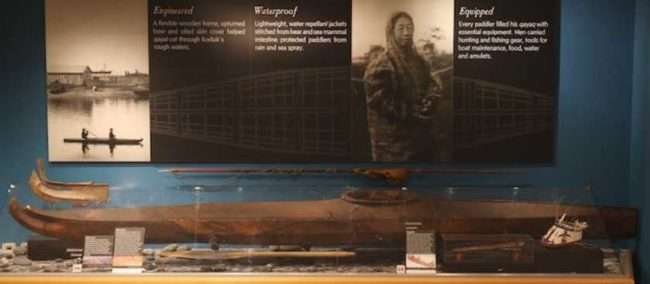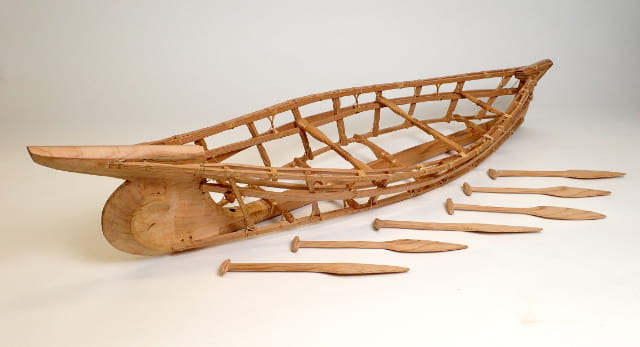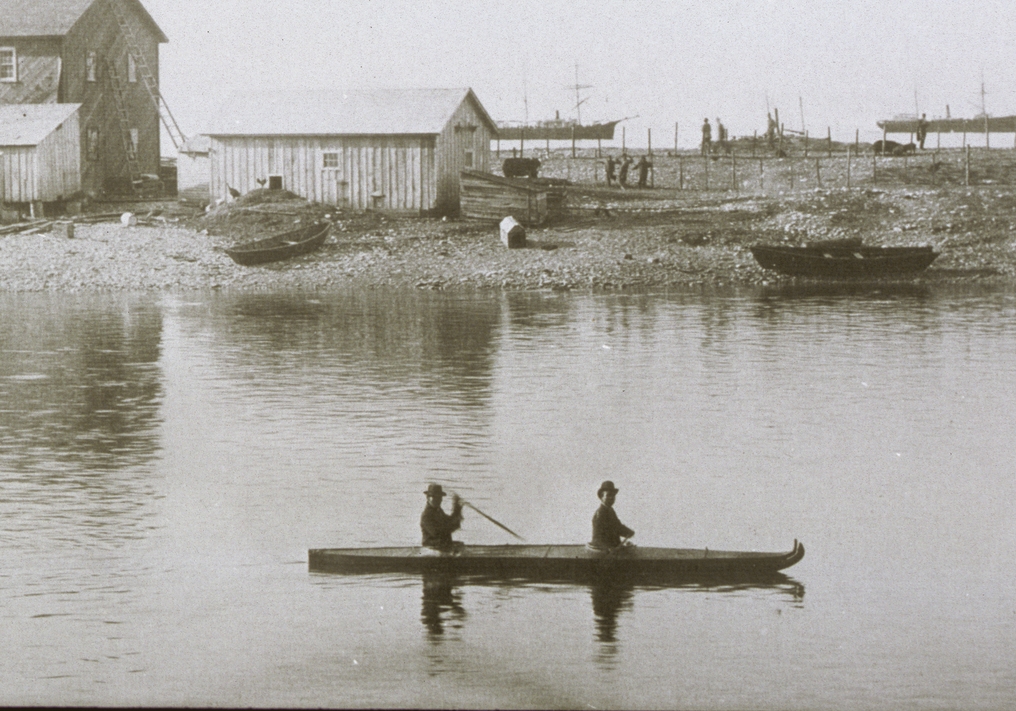
The Presidents and Fellows of Harvard College have transferred ownership of an Alutiiq/Sugpiaq kayak to the Alutiiq Museum, a tribal repository and cultural center in Kodiak, Alaska. Made in the mid-19th century, the 14-and-a-half foot, skin-covered boat is a rare example of a complete ancestral kayak. This vessel has been at the center of a long-term collaboration between the institutions and is currently on display at the Alutiiq Museum. The transfer allows the Alutiiq community to assume care of the kayak, a culturally sensitive object embellished with human hair.
US Army Officer Edward Fast collected the kayak in Alaska in 1866-1867 and gave it to Harvard’s Peabody Museum as part of the Fast Collection in 1869. After decades in storage, the boat was professionally conserved by Peabody Museum staff members in 2011, with assistance from Alutiiq culture bearers Alfred Naumoff, Susan Malutin, and Sven Haakanson, Jr. Supported by a grant from the Save America’s Treasures program of the Institute of Museum and Library Services, the Peabody opened Conservators at Work: Alaska’s Historic Kayak Renewed, an exhibition where visitors could see the conservation process. The boat then traveled to the Alutiiq Museum on loan. Since 2016, it has been the centerpiece of a gallery display on Alutiiq maritime technology, also supported by the Institute for Museum and Library Services.
In the fall of 2022, the Alutiiq Museum requested a transfer of ownership on spiritual grounds. Tufts of human hair are sewn into the boat’s seams above and below the waterline, suggesting that its owner used the hair for talismanic purposes. Alutiiq Museum Executive Director April Laktonen Counceller explained.
“In the Alutiiq world, hair holds a person’s essence. Our ancestors incorporated hair into garments, tools, and ceremonial items like dolls to forge spiritual connections. The hair used on an object imparts the qualities of its original owner–characteristics like strength, endurance, or vision. It appears that the symbolic and spiritual qualities of another person bolstered the person who paddled this boat. For the Alutiiq/Sugpiaq people, the boat is a spiritually powerful object and best cared for by our community.”
“The Peabody Museum’s partnership with the Alutiiq community over the last 20 years is a deeply meaningful one,” said Peabody Director Jane Pickering. “Building and nurturing trusted relationships with communities is fundamental to the ethical stewardship of the collections in our care. We are pleased, as the University considers the return of cultural items in its collections, that the kayak will remain at the Alutiiq Museum, at the heart of the community.”
According to Counceller, the Alutiiq Museum’s request expressed sincere appreciation for the century of care the Peabody Museum provided the kayak. She said, “caring for objects demonstrates respect for the plants and animals incorporated in them, and it is an Alutiiq value. The Peabody’s stewardship brought the boat to the present day, and we are honored to receive the legal title. Today, our community can care for this cultural treasure, and we assume that responsibility gratefully.”
The boat will continue to be a focal point in the museum’s gallery. “The Alutiiq Museum is renovating its facilities, a project that includes installing a new set of gallery displays,” said Counceller. “The kayak is one of our visitor’s favorite objects, and we plan to install it on a display about spring hunting. The boat will also be a long-term resource on kayak building. Preserved in its wooden frame, lashings, and skin cover are construction techniques used by a skilled ancestral boat builder that can help us continue to learn while we honor the ancestors whose skill and essence are preserved in the vessel.”
[content id=”79272″]







